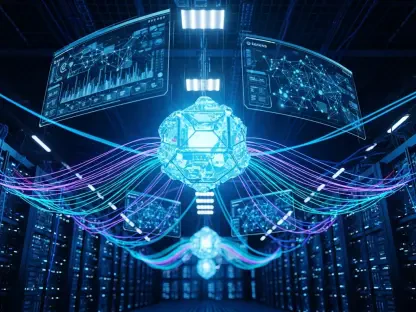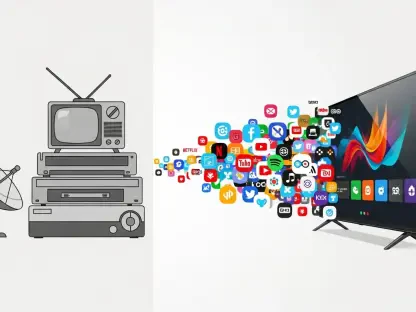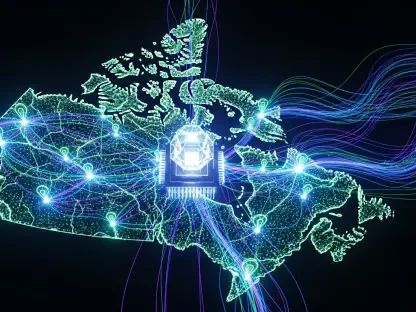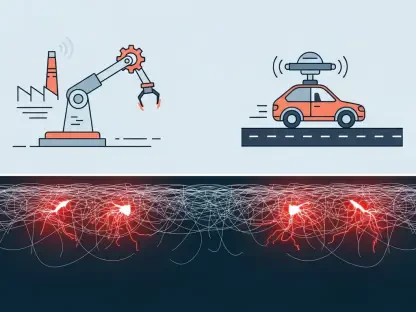Could the mobile technology relied upon today be rendered obsolete tomorrow due to the rapid evolution of the Internet of Things (IoT)? As custom IoT solutions spearhead the charge in technological innovation, they confront distinct challenges, providing answers that conventional off-the-shelf options often fail to consider.
From RFID Beginnings to Sophisticated Custom IoT Solutions: The Evolution Story
The journey of IoT is marked by significant transitions, starting with the use of standardized RFID tags meant for straightforward scenarios, such as retail inventory management. However, the landscape has shifted dramatically with the emergence of custom-engineered solutions tailored to address specific industrial complexities. This shift underscores a growing demand for precise and adaptable IoT systems capable of delivering enhanced value across various sectors.
Addressing Diverse Needs: Complexity and Customization in IoT
Today’s IoT landscape demands solutions that cater to diverse requirements across industries like pharmaceuticals, healthcare, and logistics. Each sector poses unique challenges, especially when handling delicate materials such as metals and liquids that can complicate efficient digitization. A glaring example of this complexity arises when attempting to gather sensor data in environments that inhibit off-the-shelf tags’ performance. IoT innovators must strike a delicate balance between devising specialized responses and maintaining effective scalability and cost efficiency.
Companies like Identiv exemplify this dual strategy by leveraging customization while meticulously balancing large-scale production. They employ methods that permit personalized solutions while still achieving the efficiencies of mass production. Their approach to using ferrite materials, for instance, delivers heightened performance on metal surfaces, illustrating innovation in overcoming challenging environmental conditions.
Expert Perspectives: The Path to Reliable, Custom IoT
Industry experts play a vital role in guiding custom IoT’s development. Kirsten Newquist, CEO of Identiv, highlights how strategic collaboration with customers is crucial to crafting tailored IoT solutions. This structured journey involves meticulous requirement gathering and a phased approach to prototyping and collaboration that ensures risk is well-managed throughout the lifecycle of development.
A particular challenge lies in RF environments complicated by metallic settings or temperature extremes. Innovations, such as applying ferrite materials on metal surfaces, demonstrate the lengths needed to secure solid reliability. Real-world validation through pilot production and rigorous quality assurance reviews further underscore the dedication required to deliver effective and enduring IoT solutions.
Implementing Custom IoT: Strategies for Success
Successfully deploying custom IoT in practical environments demands several key strategies. Engaging directly with manufacturers facilitates adherence to stringent industry-specific standards and regulatory demands. Additionally, connecting core technological insights with specific applications allows organizations to expand their capacities, improving performance and data-based decision-making efficiencies.
Translating these insights into actionable application builds a foundation for enhancements that boost overall efficiency and provide new leverage against operational challenges. Practical decision-making processes incorporate advanced analytical insights, leading to more informed and proactive strategies.
Toward the Future: Next Steps in Custom IoT
Reflecting on the transformative potential of custom IoT reveals a necessity for continued exploration and proactive implementation strategies. Future-facing trends in specialized IoT tags and labels indicate a rise in demand, driven by the need for higher efficiency, transparency, and sustainability across various industries. Integrating advanced analytics with smart, context-specific designs will ensure that IoT remains at the forefront of technological advancements.
These specialized IoT solutions have reshaped and continue to shape the landscape of connected devices by enabling enhanced operational intelligence. As more products are digitized, an increase in raw data available for analysis promises to usher in a new era of AI-driven insights, optimizing performance as devices become smarter and more responsive to their surroundings. Anticipating and adapting to these transformations will be essential for industries and businesses aiming to harness the full power of IoT innovations.









